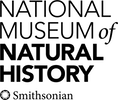Cosmospora-coccinea_con_5M

Description:
Cosmospora coccinea Rabenh., [non Nectria coccinea (Pers.) Fr. 1849], syn.: Nectria cosmariospora Ces. & De Not.; anamorph Verticillium olivaceum W. GamsSlo.: krlatna bradavikaPossibly conidia of the anamorph form??Dat.: March 25. 2017Lat.: 46.37361 Long.: 13.79341Code: Bot_1043/2017_DSC7186Habitat: alpine Fagus sylvatica forest with some Picea abies; in shade, rather cool and humid place; locally almost flat terrain; calcareous, colluvial, stony ground; elevation 950 m, average temperature 5-7 deg C, average precipitations ~ 3.000 mm/year, alpine phytogeographical region.Substratum: heavily decayed Poliporaceae (Phellinus punctatus and Inonotus nodulosus most common at this place) on fallen off, rotten branch of Fagus sylvaticaPlace: Zadnjica valley west of Mt. Triglav, East Julian Alps, Posoje, Slovenia EC.Comments: I found this ascomycete on heavily decayed pore layer of a Poliporaceae. Phellinus punctatus and Inonotus nodulosus seem most probable at this regions. First I thought I found Nectria peziza (since on polypore). However, spores proved to be too big and too tuberculate. Also perithecia seem pyriforme rather than globose and they apparently do not degrade to widely open 'peziza' type cups when old as I expected. Surprisingly I was unable to find asci? In the literature available to me I found no fit to this find. Thanks to the help obtained at AscoFrance (Ref.:1) the find was determined as Cosmospora coccinea. The fungus grows almost exclusively on Inonotus nodulosus decayed pore layer.Spores tuberculate. Dimensions: 14.3 [16.5 ; 17.6] 19.8 x 8.6 [10.2 ; 11] 12.6 microns; Q = 1.3 [1.6 ; 1.7] 1.9; N = 24; C = 95%; Me = 17 x 10.6 microns; Qe = 1.6. Olympus CH20, NEA 40x/0.65, magnification 400x (all pictures except:), Bausch & Lomb, 4x/0.10, magnification 40x (whole perithecia), in water, fresh material; Novex, Zoom Stereo RZ_Range, Holland (macro pictures of habit). AmScope MA500 digital camera. Herbarium: Mycotheca and lichen herbarium (LJU-Li) of Slovenian Forestry Institute, Vena pot 2, Ljubljana, Index Herbariorum LJFRef.:(1) Personal communication with Mr. Gernot Friebes (idded the find) and Thomas Lsse, AscoFrance(2) T. Grfenhan, H.J. Schroers, H.I. Nirenberg, and K.A. Seifert (2011), An overview of the taxonomy, phylogeny, and typification of nectriaceous fungi in Cosmospora, Acremonium, Fusarium, Stilbella, and Volutella, Stud Mycol., 68: 79113. www.ncbi.nlm.nih.gov/pmc/articles/PMC3065986/(3) www.marn.at/index-fungorum/cosmariospora_mikro.html (4) www.sites.google.com/site/funghiparadise/home
Included On The Following Pages:
- Life (creatures)
- Cellular (cellular organisms)
- Eukaryota (eukaryotes)
- Opisthokonta (opisthokonts)
- Nucletmycea
- Fungi (mushrooms, lichens, molds, yeasts and relatives)
- Dikarya
- Ascomycota (sac fungi)
- Sordariomycetes
- Hypocreales
- Nectriaceae
- Cosmospora
- Cosmospora coccinea
This image is not featured in any collections.
Source Information
- license
- cc-by-nc-sa
- copyright
- Amadej Trnkoczy
- photographer
- Amadej Trnkoczy
- original
- original media file
- visit source
- partner site
- Flickr Group
- ID


